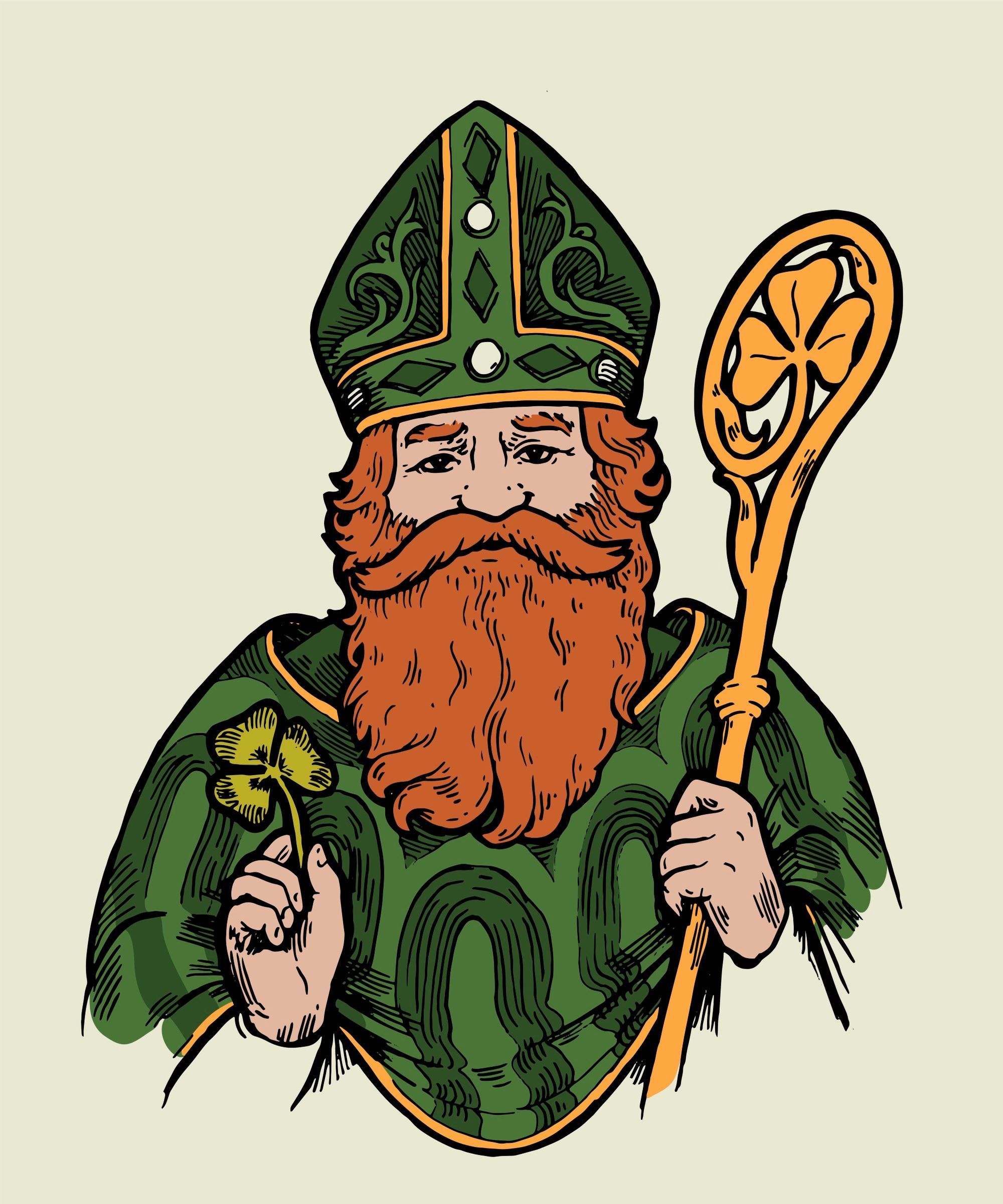Saint Patrick: Unraveling the Legends of Ireland's Beloved Patron Saint
Discover the true story of Saint Patrick, Ireland's beloved patron saint. Journey beyond the legends of shamrocks and snakes to uncover his lasting impact on Irish history and how his legacy continues to be celebrated worldwide.

When it comes to the Emerald Isle, few figures are as well-known and revered as Saint Patrick. As the patron saint of Ireland, his story has been shrouded in legend and mystique over the centuries, making him an enigmatic figure that continues to captivate us today. In this blog post, we'll dive deep into the history of Saint Patrick, separating fact from fiction, and explore the legacy he left behind. So, grab a cup of tea (or a pint of Guinness) and join us on a journey through time to uncover the real story of Ireland's most famous saint.
The Man Behind the Myth
Although the legends of Saint Patrick are abundant, historical facts are harder to come by. Patrick, believed to have been born in the late fourth century (around 385 AD) in Roman Britain, was not always the saint we know him to be today. At the age of 16, he was kidnapped by Irish pirates and brought to Ireland as a slave. Here, he spent six years herding sheep and becoming intimately acquainted with the Irish landscape and culture.
It was during this time that Patrick experienced a spiritual awakening, leading him to escape his captors and return to Britain. Determined to share the Christian faith with the people of Ireland, Patrick trained to become a priest and eventually returned to the Emerald Isle as a missionary.

Representation of St Patrick
Driving Out the Snakes: Fact or Fiction?
One of the most popular legends surrounding Saint Patrick is his miraculous banishment of snakes from Ireland. As the story goes, Patrick stood on a hilltop and used his staff to drive all the snakes into the sea, ridding the island of these slithering creatures for good.
Although it's an entertaining tale, there is no evidence to support this story. In reality, Ireland has never had a native snake population, largely due to its isolation from mainland Europe after the last ice age. Instead, the "snakes" in the legend likely symbolize the pagan beliefs that Patrick aimed to replace with Christianity.
The Power of the Shamrock
The shamrock, a three-leafed clover, is another symbol closely associated with Saint Patrick. As the story goes, Patrick used the simple plant to explain the concept of the Holy Trinity (the Father, the Son, and the Holy Spirit) to the Irish people. By using a visual example that was familiar and abundant in Ireland, Patrick was able to make the complex idea of the Trinity more relatable.
While there is no historical evidence to confirm this story, the shamrock has become an enduring symbol of both Saint Patrick and Ireland itself. Today, it's common to see shamrocks displayed during the celebration of Saint Patrick's Day, an annual event held on March 17th to honor the saint's death.

The Shamrock
The Legacy of Saint Patrick
Despite the legends and myths surrounding Saint Patrick, his impact on Ireland is undeniable. As a missionary, he played a crucial role in converting the Irish people to Christianity, setting the stage for the country's religious and cultural development.
Patrick's work laid the foundation for the establishment of monasteries and churches across the island, which would later become centers of learning and scholarship. Ireland's Golden Age of Learning (c. 6th-9th centuries) can be traced back to the Christianization that began with Saint Patrick. During this period, Irish monks and scholars preserved and transmitted knowledge across Europe, helping to shape Western civilization.
Celebrating Saint Patrick Today
Although Saint Patrick's Day originally began as a religious feast day, it has evolved into a worldwide celebration of Irish culture, heritage, and history. With parades, music, dancing, and plenty of green attire, millions of people around the globe come together to honor the life and legacy of Saint Patrick.
In Ireland, Saint Patrick's Day is a public holiday marked by grand parades, lively festivals, and traditional Irish music. Dublin, the country's capital, hosts the largest celebration, with events spanning several days and drawing tourists from all corners of the world. However, smaller towns and villages across the island also have their unique ways of commemorating their beloved patron saint.
In the United States, cities with significant Irish-American populations, such as New York, Boston, and Chicago, host large parades and festivities. The Chicago River is famously dyed green each year in honor of the occasion. Meanwhile, in other parts of the world, iconic landmarks such as the Sydney Opera House and the London Eye are illuminated in green light to pay homage to Ireland's patron saint.

People celebrating St Patrick's Day
Embracing the True Spirit of Saint Patrick
As we celebrate Saint Patrick's Day, it's essential to remember the real story behind the legends and the man who devoted his life to sharing the Christian faith with the people of Ireland. While the myths and folklore surrounding Saint Patrick are fascinating and colorful, his true legacy lies in the impact he had on Ireland's religious, cultural, and intellectual development.
This Saint Patrick's Day, as we don our green attire, raise a glass in toast, and revel in the lively atmosphere of parades and parties, let's also take a moment to reflect on the life and mission of Saint Patrick. In doing so, we can embrace the true spirit of this remarkable saint and the indelible mark he left on the Emerald Isle.